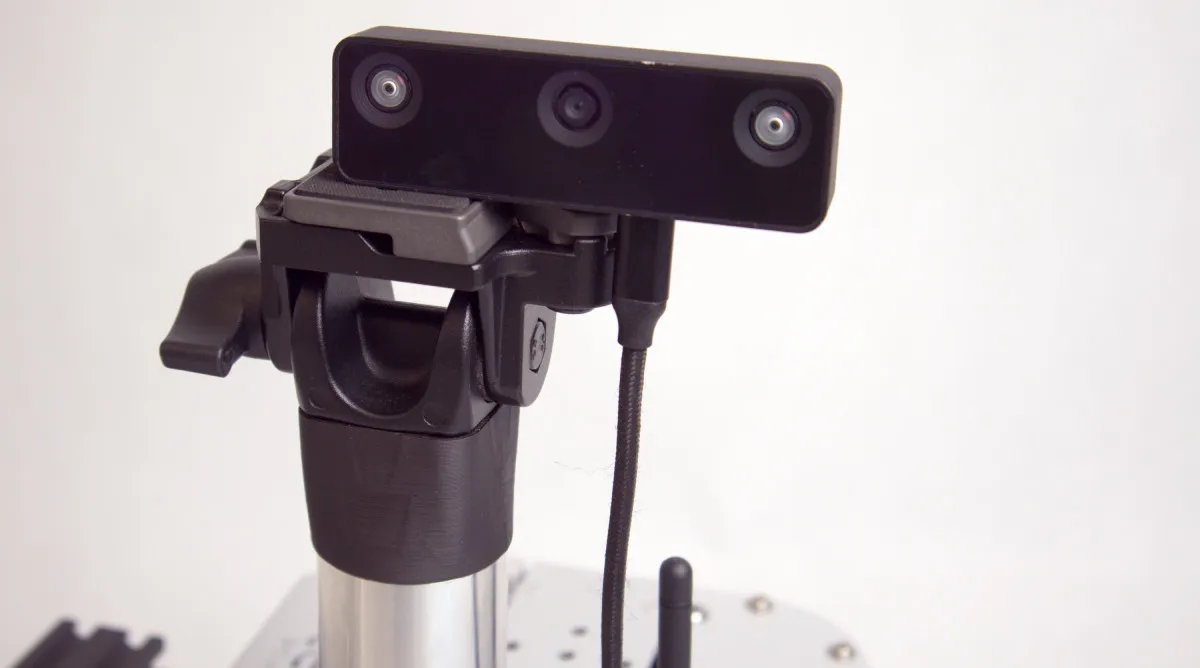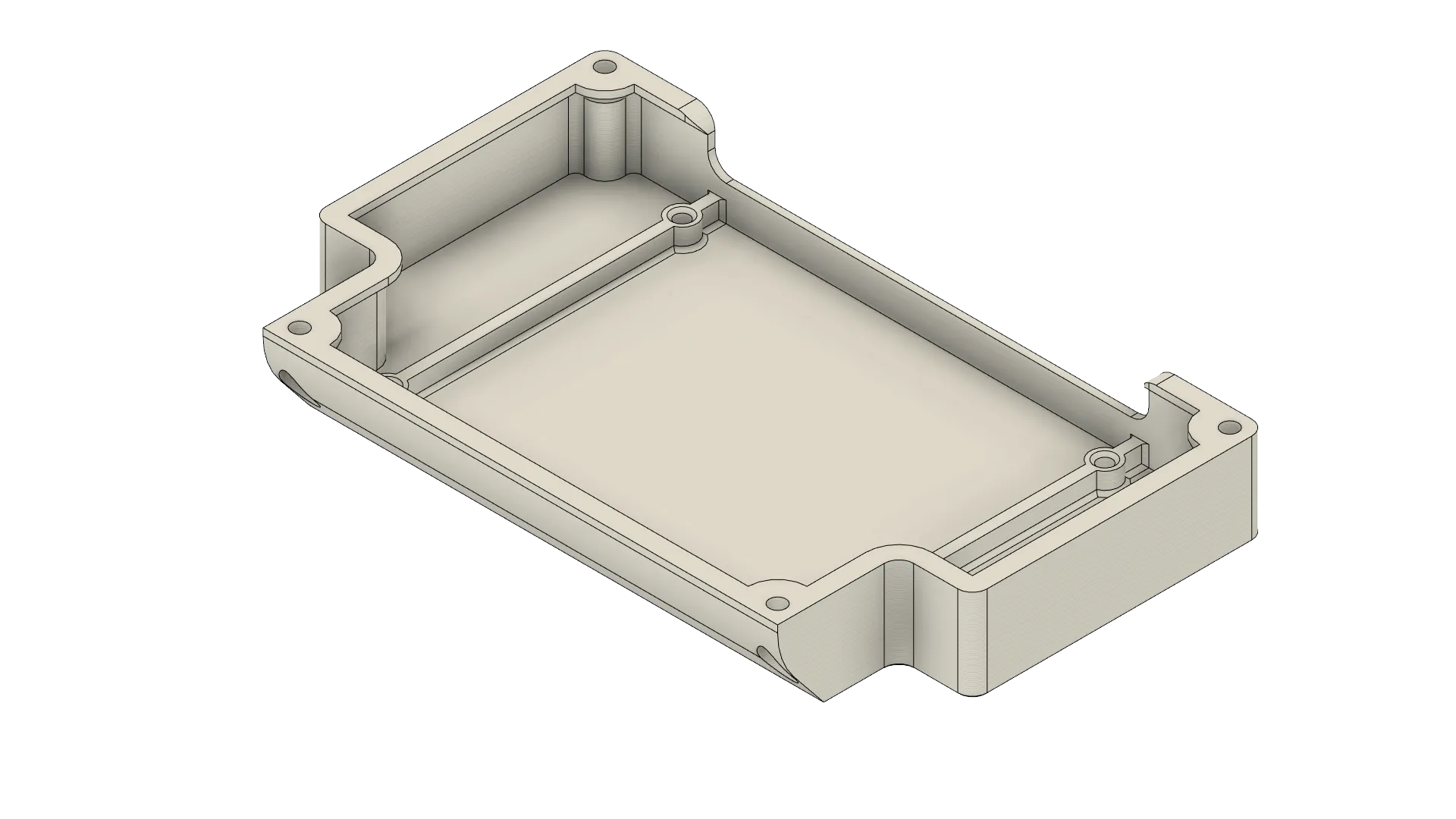Luxonis OAK-D Camera Integration
This tutorial will guide you through the process of connecting an Oak-D camera to your Leo Rover.
OAK-D is the ultimate camera for robotic vision that perceives the world like a human by combining stereo depth camera and high-resolution color camera with an on-device Neural Network inferencing and Computer Vision capabilities. It uses USB-C for both power and USB3 connectivity. In robotics, stereo cameras are commonly used for mapping the environment, object recognition, 3D scanning and in many other.
What to expect?
After completing this tutorial, you will have successfully connected an Oak-D stereo camera to the Leo Rover in ROS, and you will possess basic knowledge about the use of stereo cameras.
Prerequisites
List of components
- Oak-D Series Stereo Camera
- Any mounting solution (eg. Universal Camera Mast)
- USB-A to USB-C wire
- (optional) USB-C to DC power supply
Mechanical integration
There are multiple use cases for stereo cameras. Since we cannot predict them all, we cannot design a perfect mount for all of them. That's why we provide a Universal Camera Mast that can fit a wide range of projects.

Wiring and electronics connection
Whether you are using our Universal Camera Mast or your own custom solution, you'll need to connect the camera to the rover somehow.
The USB port placed on the mounting plate of the rover supports USB 3.0 which means you can connect the camera directly to this port without additional modifications.
That is not true for Leo Rover robot version 1.8 and below. If you have this model, you have to follow one of the approaches presented below.
Alternatively you can connect the USB-C wire straight to the USB ports of the rovers built-in Raspberry Pi.
Kacper from our team likes to remove the micro-usb port entirely and run the wire straight through the newly created hole. This solution, combined with the use of a cable gland, keeps the MEB box waterproof.
Second common solution involves printing a new cover for the MEB box. Dev cover found here, provides a wide opening for running wires straight into the MEB. This solution can be extremely useful in projects that don't need to be waterproof.

If the camera isn't the only thing connected to the rover you might need to provide an external power connection. Powerbox might come in handy in such situations.
Software integration
Installing the packages
The first thing you can do is to make sure your device has the correct permissions. To do this, you can add the following rule to the udev service:
SUBSYSTEM=="usb", ATTRS{idVendor}=="03e7", MODE="0666"
Paste these lines to /etc/udev/rules.d/luxonis.rules file and reload udev
rules by typing:
sudo udevadm control --reload-rules && sudo udevadm trigger
We want the sensor functionality to be available in the ROS ecosystem, so you should install a ROS package that provides a node for the camera.
sudo apt install ros-${ROS_DISTRO}-depthai-ros
Adding camera model
As we want to have the camera model visible with the rover model, we need to
create an URDF file with the Oak included. Package depthai_descriptions is
installed alongside depthai-ros and it contains Oak camera models and xacro
macros that we can easily add (list of available models
here).
<?xml version="1.0"?>
<robot xmlns:xacro="http://www.ros.org/wiki/xacro">
<xacro:include filename="$(find depthai_descriptions)/urdf/include/depthai_macro.urdf.xacro"/>
<xacro:depthai_camera camera_name="oak"
camera_model="OAK-D-PRO-W"
base_frame="oak-d-base_frame"
parent="base_link"
cam_pos_x="0.0"
cam_pos_y="0.0"
cam_pos_z="0.0"
cam_roll="0.0"
cam_pitch="0.0"
cam_yaw="0.0"/>
</robot>
The parameters named cam_<> determine camera's position and orientation in the
robot model. In the file above they are set to the default values, therefore you
will have to adjust those parameters to your setup. Remember that the position
of the camera is provided in reference to the base_link frame. The location of
the frame can be seen at the end of this guide section:
Now we have to include our camera model in robot.urdf.xacro file - the
description that is uploaded at boot. Add this line somewhere before the closing
</robot> tag.
<xacro:include filename="/etc/ros/urdf/oak.urdf.xacro"/>
Creating launch and configuration files
To launch the camera you can, create your own launch file, use one of the
example packages from depthai-ros package or you can use the provided launch
file which provides basic functionalities such as camera image and depth data.
In /etc/ros create a .yaml configuration file. This example contains
configuration for Oak-D Pro Wide rbg and depth camera.
/oak:
ros__parameters:
oak.rgb.image_raw.enable_pub_plugins:
['image_transport/raw', 'image_transport/compressed']
oak.stereo.image_raw.enable_pub_plugins:
['image_transport/raw', 'image_transport/compressedDepth']
camera:
i_pipeline_type: RGBD
i_nn_type: none
i_laser_dot_brightness: 1000
imu:
i_acc_freq: 50
i_rot_freq: 50
i_gyro_freq: 50
rgb:
i_publish_topic: true
i_fps: 30.0
i_resolution: 12MP
i_isp_num: 1
i_isp_den: 3
i_output_isp: true
i_width: 1344
i_height: 1008
left:
i_publish_topic: false
i_fps: 10.0
i_resolution: 800P
right:
i_publish_topic: false
i_fps: 10.0
i_resolution: 800P
stereo:
i_align_depth: true
i_subpixel: true
i_stereo_conf_threshold: 110
i_enable_brightness_filter: false
i_brightness_filter_min_brightness: 1
i_brightness_filter_max_brightness: 225
i_enable_decimation_filter: true
i_publish_left_rect: false
i_publish_right_rect: false
Next, also in /etc/ros create a launch file that will use the previously added
configuration for the oak camera node.
<launch version="0.1.1">
<node name="oak" namespace="" pkg="depthai_ros_driver" exec="camera_node">
<param from="/etc/ros/oak.yaml" />
</node>
</launch>
You can set the namespace property of the node tag to whatever you want, but
the name has to be set to the same value as the camera_name in urdf file.
It's required for the camera data to be placed in correct TF frame.
For more information about oak configuration and usage examples you can check out the depthai-ros github repository.
Launching camera nodes on system startup
Include your launch file in the robot.launch.xml file, so that your node will
start at boot.
In /etc/ros/robot.launch.xml add this line somewhere before the closing
</launch> tag:
<include file="/etc/ros/oak.launch.xml"/>
Now your Oak-D camera ROS node will start at launch. You can also start them now by typing
ros-nodes-restart
Examples
Reading and visualizing the data
The topics from camera node should be now visible. You can check them with
ros2 topic tool - topics from your node will have prefix specified by you in
the name and namespace node tag properties.
If you have ROS installed on your computer, you can get the camera image with rqt.
If you don't have ROS, you can follow this guide:
Before starting any of the programs, make sure you are connected to the rover's network:
Now you can start rqt, and from plugins -> visualization choose
image view and then choose your topic.
Don't worry if the quality is low, and the image is lagging. It is due to transfer of the data through your rover and computer.
You can also start RViz to see the robot model. Type rviz2 in the terminal,
or, if you have the leo_viz package installed, type:
ros2 launch leo_viz rviz.launch.xml
This will start RViz with visualization of the current robot model.
You can easily install the leo_viz package with this command
sudo apt install ros-${ROS_DISTRO}-leo-desktop
You will also have to install depthai-descriptions package on your computer
sudo apt install ros-${ROS_DISTRO}-depthai-descriptions
With RViz opened, add robot model in the display view. Chose also
base_link as fixed frame, and you should see the rover model with camera
attached.
You can also display tf tree in rqt, to see if everything is configured
correctly (plugins -> visualization -> TF Tree)

What next?
Stereo cameras are commonly used in projects involving autonomous navigation, you might be interested in a tutorial about it.
They are however, not the only way of teaching a Leo Rover how to move on it's own. Check out our line follower tutorial if you want to learn more. You can also check our Integrations page for more instructions.